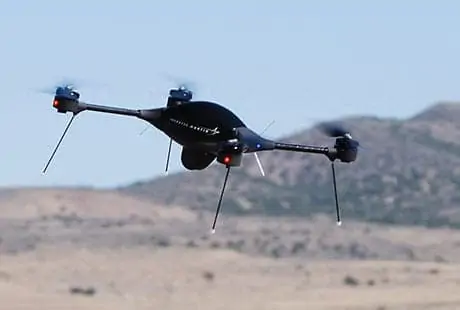Three systems acquired by Lockheed Martin have progressed from their research and development phase to operational readiness. The Indago vertical take-off and landing (VTOL) quad-rotor, accompanied by its handheld ground control station (GCS) will offer a robust, mobile surveillance application. Additionally, a new Commercial Avionics Suite delivers the same performance and reliability that customers have enjoyed with the previous products but at a new low price.
“After two years of developing these capabilities, we will now be able to deliver affordable and effective products to both military and commercial customers,” said Kevin Westfall, director of unmanned solutions at Lockheed Martin’s Mission Systems and Training business. “The Indago VTOL, handheld GCS and advanced Commercial Avionics Suite will provide mobility and high accuracy for a range of missions – now and in the future.”
The compact Indago VTOL, which folds up and requires no assembly, achieves ranges of up to five kilometers for up to 45 minutes when operated using the handheld GCS. The VTOL features a 360 degree panning capability to aid area surveillance and provide enhanced situational awareness and actionable imagery in support of emergency response needs including search and rescue situations, disaster relief or other surveillance missions. The handheld GCS, which runs for four hours and is designed for outdoor readability, can be used with Indago and as a standalone system with other aircraft.
At the heart of the Indago VTOL is the proven Kestrel autopilot system. The Kestrel autopilot uses failsafe algorithms to increase safety throughout the mission, and has flown in more than 60 aircraft, achieving thousands of flight hours.
The Indago VTOL, handheld GCS and avionics suite join Lockheed Martin’s strong portfolio of unmanned aerial systems (UAS) and supporting ground control stations ranging from the Desert Hawk III small UAS, to the rail-launched Fury UAS, to the K-MAX cargo resupply UAS.



















